Palantir launches Chain Reaction AI infrastructure platform with CenterPoint and NVIDIA
It seems President Donald Trump has nominated himself as the Shadow Fed chair. He also appears to believe the overnight rate should be at 1%. It will be interesting to see how this plays out for the market.
Clearly, DOGE wasn’t successful in bringing rates down, and the new tax bill certainly won’t help either. That leaves jawboning as the only remaining option. The issue, however, is that unless the Fed initiates QE or Yield Curve Control, the long end of the yield curve isn’t bothered about what the Fed does with the overnight rate.
If I were Powell, I’d resign at this stage, hand the reins to Trump, and consider relocating to Monaco or a similar destination—simply sit back, enjoy retirement, and watch from afar.
For now, the jawboning appears effective, as rates and the dollar move lower. This shift is also causing the typical correlation between bonds and stocks to break down. It’s fascinating how this relationship evolves: when both stocks and rates rise, it’s attributed to economic strength; when rates decline but stocks rise, it’s seen positively because lower rates help expand valuation multiples.
To me, this seems more like a friendship of convenience.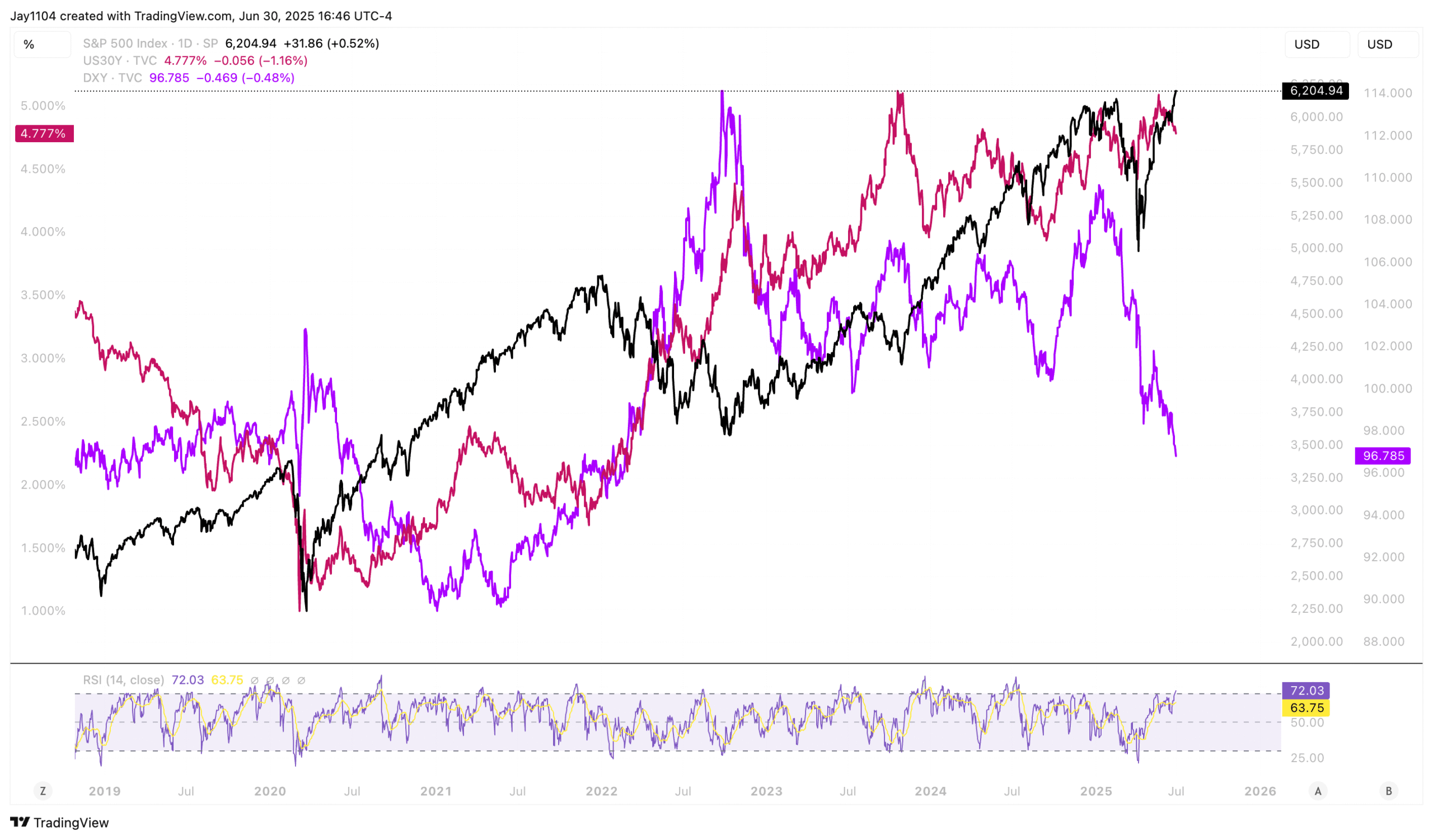
Another interesting factor is the dollar, which is also declining. One has to wonder what the bond market and the dollar are aware of that the stock market isn’t. They appear to be signalling slowing growth. This week’s economic data will be crucial in shaping this theme and determining the next steps.
This can be seen quite clearly when examining the US 5-year and Japanese 5-year rates, both of which are now back at the neckline. Weak US data this week could easily trigger a breakdown here. If this happens, it will likely disrupt the remainder of the yen carry trade and drag USD/JPY below 140.
The S&P 500 has now reached the 50% extension level of wave 3 and has traded above its upper Bollinger Band for three consecutive days, with an RSI of 72. While it’s possible the index could become even more extended, conditions like these typically result in at least a period of sideways consolidation or a pullback.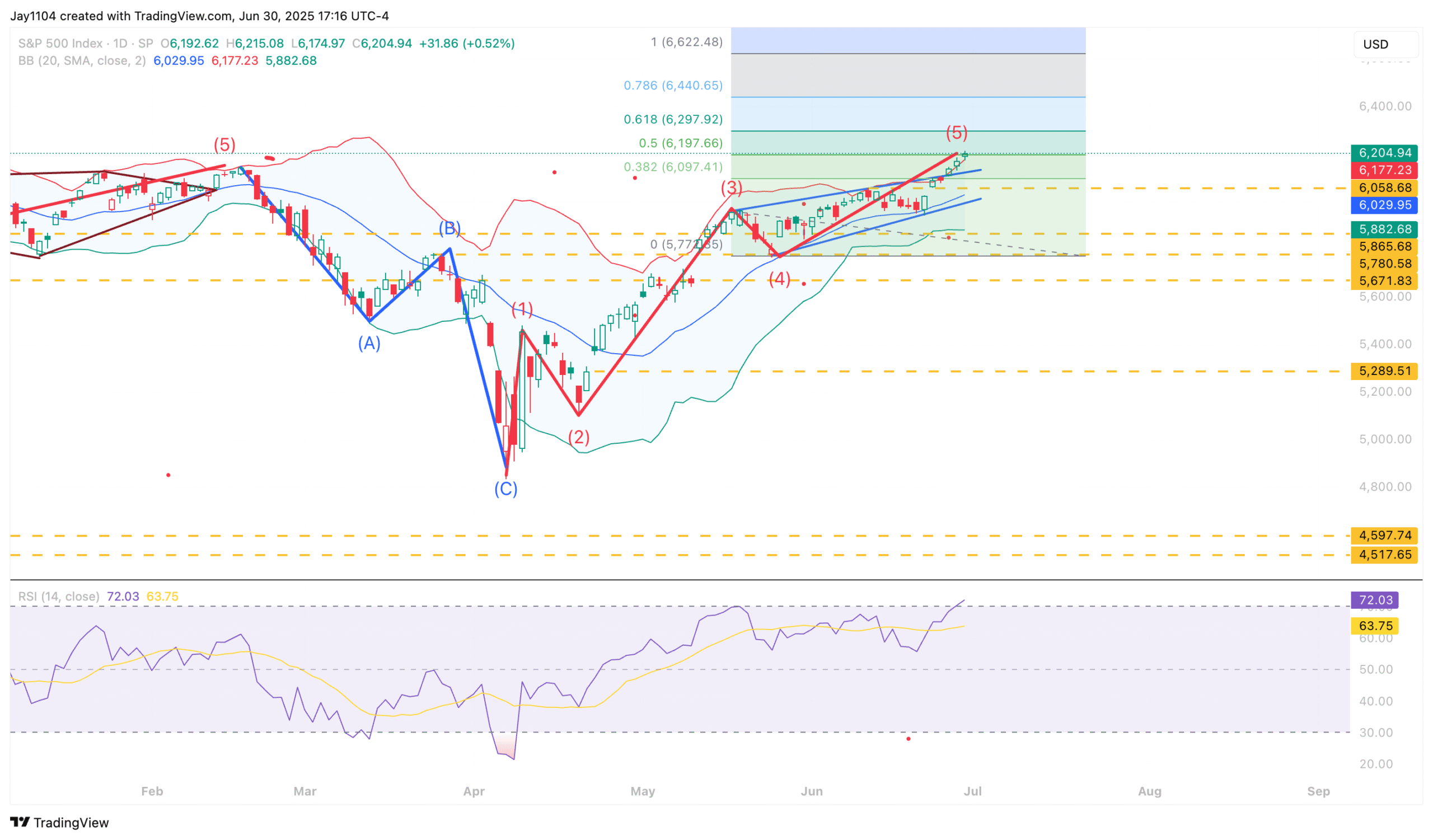
It may be hard to believe, but the NASDAQ has now traded above its upper Bollinger Band for five consecutive days and has an RSI of 72.6.
You can add Meta (NASDAQ:META) to the list of mega-cap stocks that are now overbought, with it too trading above its upper Bollinger band, with an RSI over 70.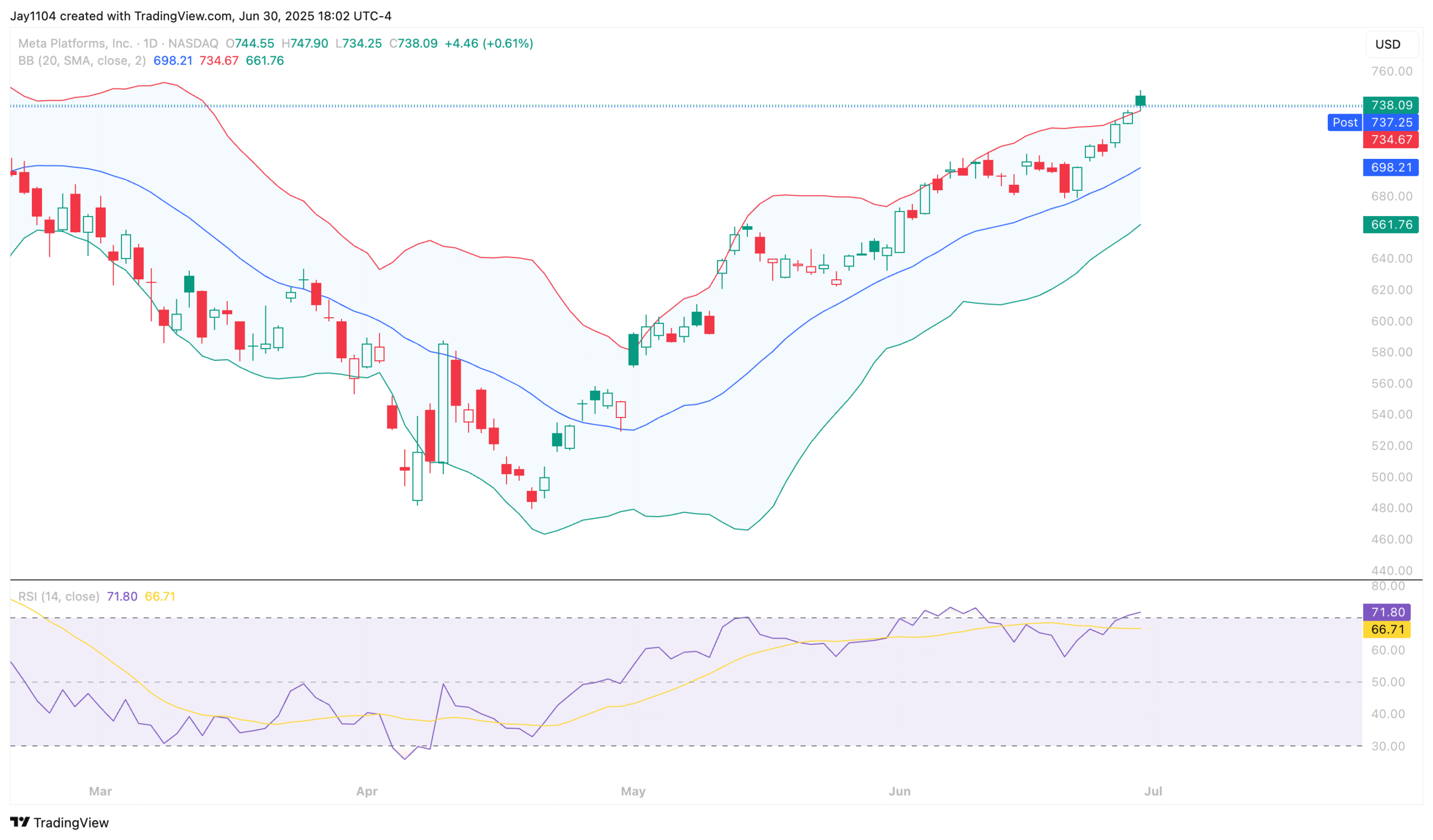
Anyway, yesterday we saw the average overnight repo rate rise to 4.57% for quarter-end—the highest since December. This rate should begin to ease today, although I’d guess SOFR will likely come in above 4.5%. Meanwhile, reverse repo volumes spiked by around $175 billion yesterday, reaching $461 billion. Still, at least for now, the stock market has remained largely unaffected.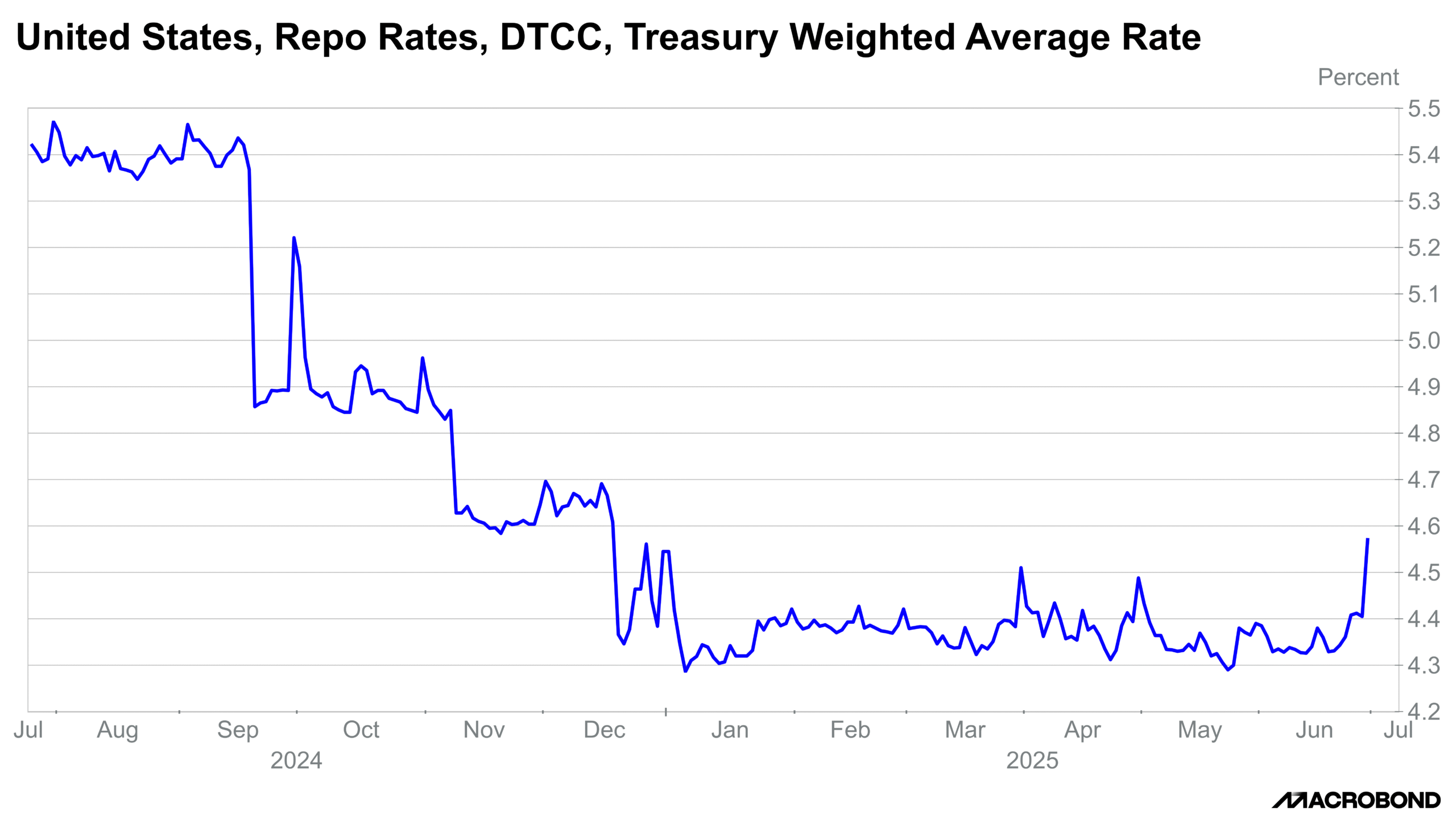
Even the Standing Repo Facility saw $11 billion pass through it yesterday, as the overnight rate traded above 4.5%. As shown in the chart below, we haven’t observed this level of activity in the SRF (NSE:SRFL) for quite some time, highlighting just how tight conditions were in overnight markets yesterday. The Fed was a liquidity provider in this case.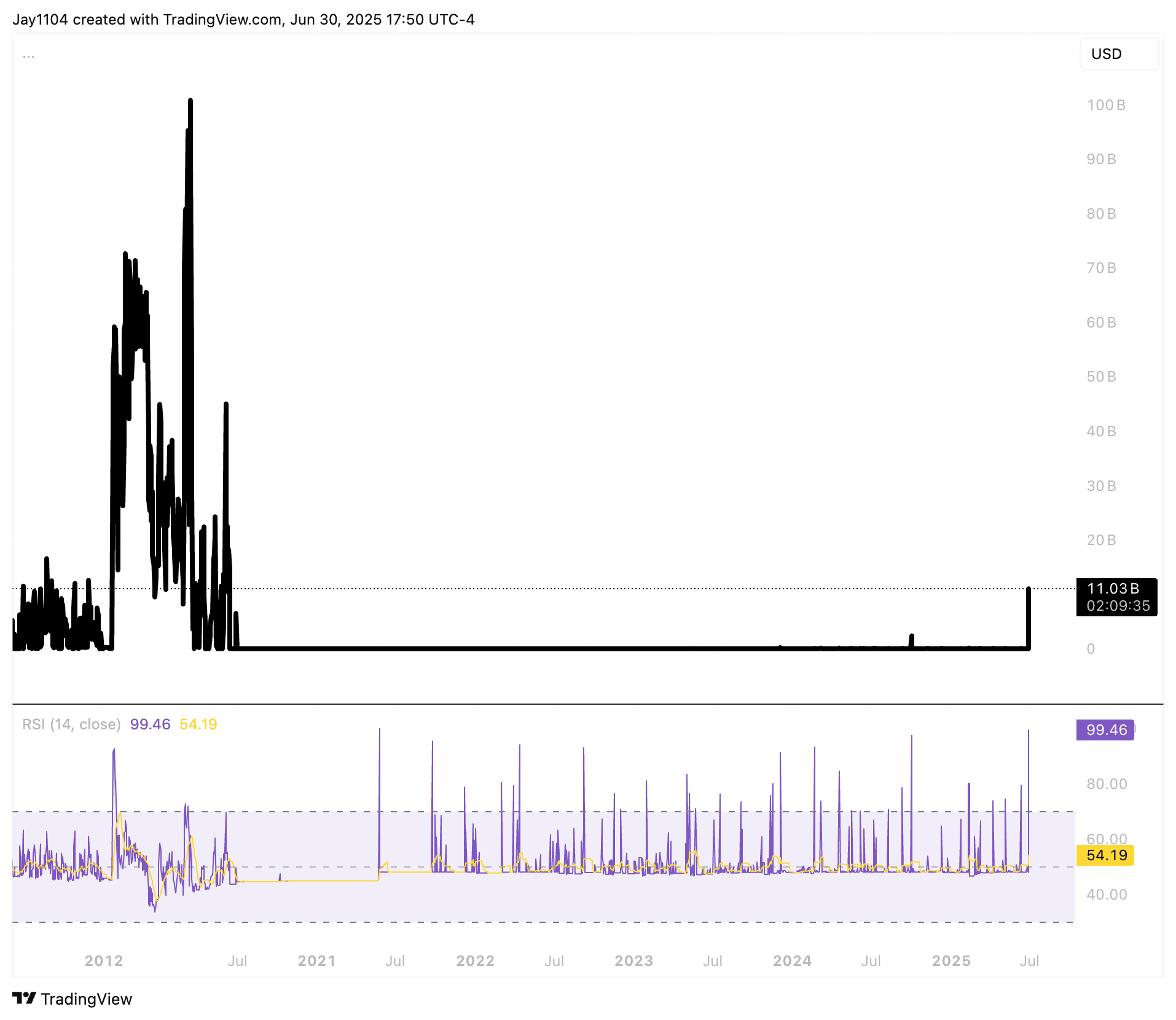
It seems remarkable to me that this kind of liquidity tightening occurred without even causing a ripple on the surface. However, as I’ve mentioned numerous times before, liquidity impacts often involve a delayed reaction.
